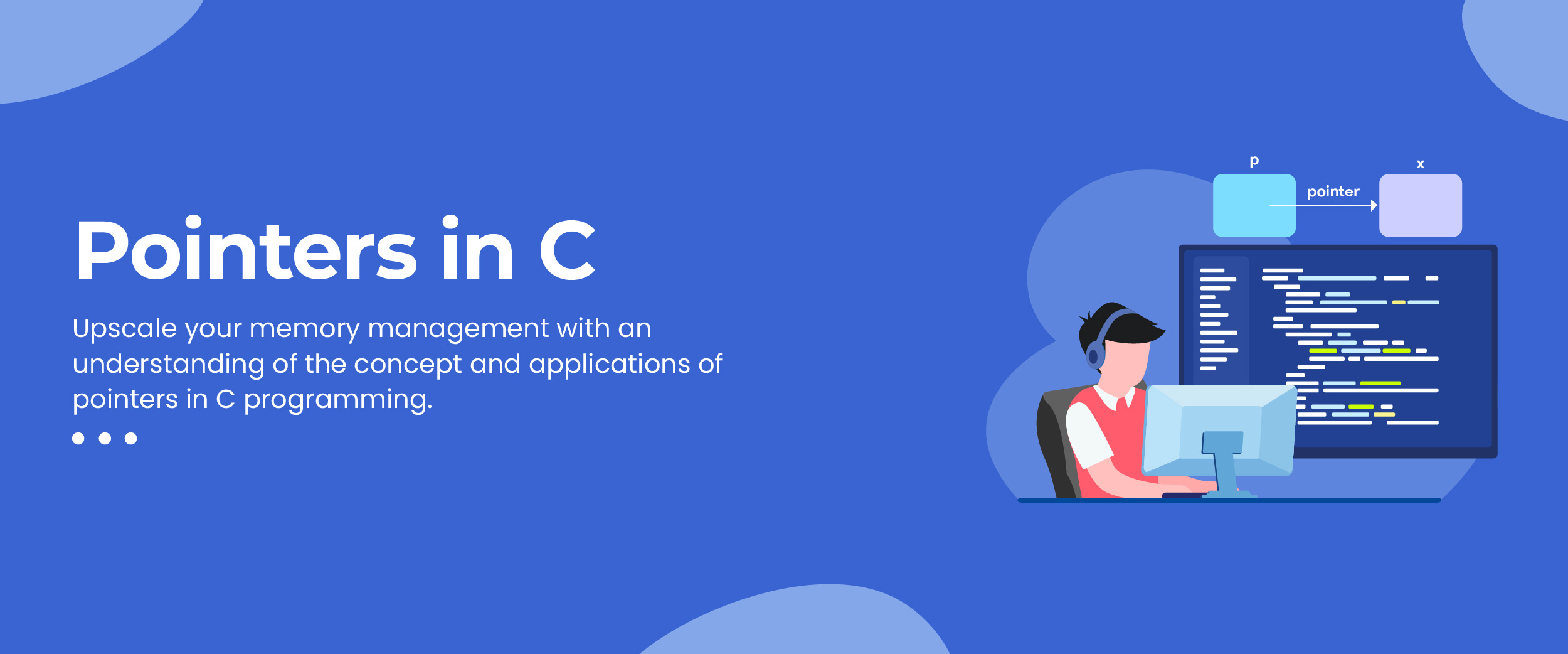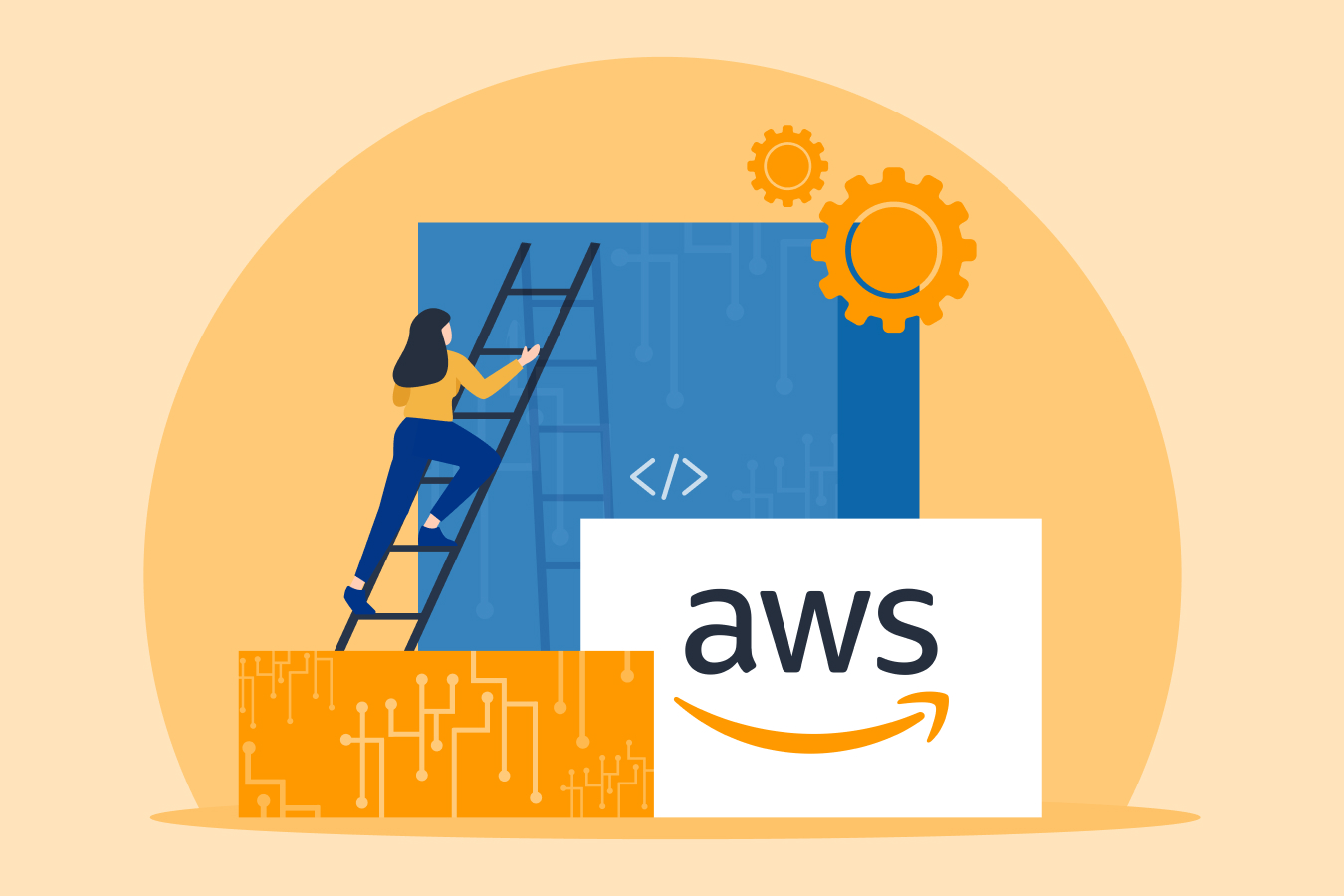Pointers in C: Types With Examples
The C programming language has a sophisticated feature that enables users to access memory regions and alter the data they contain. This feature is called pointers. Pointers in C are variables that store memory addresses of other variables. They give a powerful and versatile mechanism to manipulate data in memory. They can be used for data manipulation and memory management and to build dynamic data structures, like linked lists and hash tables. They also enable the efficient processing of vast volumes of data and facilitate the design of memory-efficient code.
Pointers can be supplied as function arguments to alter data at the original memory address. Overall, understanding and adequately manipulating pointers is fundamental to mastering C programming. In this blog, we will learn about pointers, their types, advantages, etc. So, let’s begin.
What is a Pointer in C?
A variable that holds the address of another variable is known as a pointer in C. It can be compared to a memory location reference that points to the value kept at that location. In C, pointers offer a potent method of data manipulation, enabling the programmer to access and alter data in a particular memory region.
The asterisk (*), commonly referred to as the “pointer operator,” is used in C to indicate pointers. Pointers can be declared constant or non-constant depending on the data type of the pointer. A volatile pointer, for instance, points to a non-constant value, while a constant pointer points to a constant value.
Benefits of Pointers in C
The benefits of utilizing pointers include the ability to change data, access memory locations, and pass data across functions. Pointers can also be used for dynamic memory allocation to use memory resources more effectively. Furthermore, since the data is stored in the same memory address as the pointer, pointers enable more effective data handling and processing.
Pointers can be used to transmit data between functions and access and modify data stored in memory locations. Additionally, references can be utilized to allocate dynamically, making it possible to utilize memory resources more effectively.
Types of Pointers in C
In C, null and empty pointers are the two different types of pointers. Let’s learn more about each of them in detail below.
1. Null Pointer in C
In C, a pointer that doesn’t point to any particular place is known as a null pointer. The absence of a valid value or the end of a linked list is typically indicated by using it. Additionally, it’s employed to denote a bad memory address. Any pointer variable can be given a null pointer, and the NULL macro can be used to check for equality.
When a program tries to access a memory address to which it does not have permission, null pointer errors may result. Segmentation faults, memory spills, and other unforeseen issues may result. Before dereferencing, it’s crucial to check for null references to prevent these mistakes. Furthermore, avoiding null pointer failures can be achieved by employing smart pointers or other memory management strategies. To learn more about these pointer types, you can opt for an in-depth C and C++ course.
2. Void Pointer in C
In C, a pointer not connected to any specific data type is known as an empty pointer. Any data type can be accessed with it, but it must first be cast to the proper type. Whenever a function needs to accept parameters of different data types, void instances are frequently employed.
Dynamic memory allocation is possible because of void pointers, which can be used to construct and save pointers to any kind of object. When working with standard data structures like linked lists and trees, they are also helpful. A generic data type is not necessary when passing between functions when using void references.
Example Use of Pointers in C
One common example of using pointers in C is dynamic memory allocation. In C, the size of an array must be defined at compile time, which can be limiting in certain situations. Dynamic memory allocation allows the program to allocate memory at runtime, using pointers to keep track of the allocated memory.
Here’s an example of pointers for dynamic memory allocation in C:
#include <stdio.h>
#include <stdlib.h>
int main() {
int *ptr;
int n;
printf("Enter the number of integers to be entered: ");
scanf("%d", &n);
ptr = (int*) malloc(n * sizeof(int)); // Allocating memory
if (ptr == NULL) {
printf("Memory not allocated.\n");
exit(0);
}
printf("Enter %d integers:\n", n);
for (int i = 0; i < n; i++) {
scanf("%d", &ptr[i]); // Reading input values
}
printf("The integers entered are: ");
for (int i = 0; i < n; i++) {
printf("%d ", ptr[i]); // Printing input values
}
free(ptr); // Freeing allocated memory
return 0;
}
In this example, the program first asks the user to input the number of integers to be entered. The program then allocates memory for n integers using malloc(), which returns a pointer to the allocated memory. If the allocation fails, the program prints an error message and exits.
The user then enters n integers, which are stored in the allocated memory using pointer arithmetic. Finally, the program prints the entered integers and frees the allocated memory using free().
Advantages of Pointers in C
The following are the advantages of pointers.
- Provide access and control over data stored in a specified memory region.
- Help in data manipulation and memory management.
- Efficiently manage memory, build linked lists, and work with text.
- References can pass parameters by reference, avoiding wasteful data transfers.
- Enable dynamic data structures like linked lists, trees, and hash tables.
- Facilitate the processing of massive amounts of data.
- Create memory-efficient code, lowering program memory requirements.
- Provide an effective approach to accessing various system areas, allowing access to data from anywhere in the code.
Conclusion
The pointers in the C programming language enable users to access memory regions and alter the data they contain. Null and empty pointers are the two types of pointers in C. They provide several benefits over other programming languages. C’s use of pointers makes it feasible to manipulate data effectively and perform actions that would not be possible otherwise.






